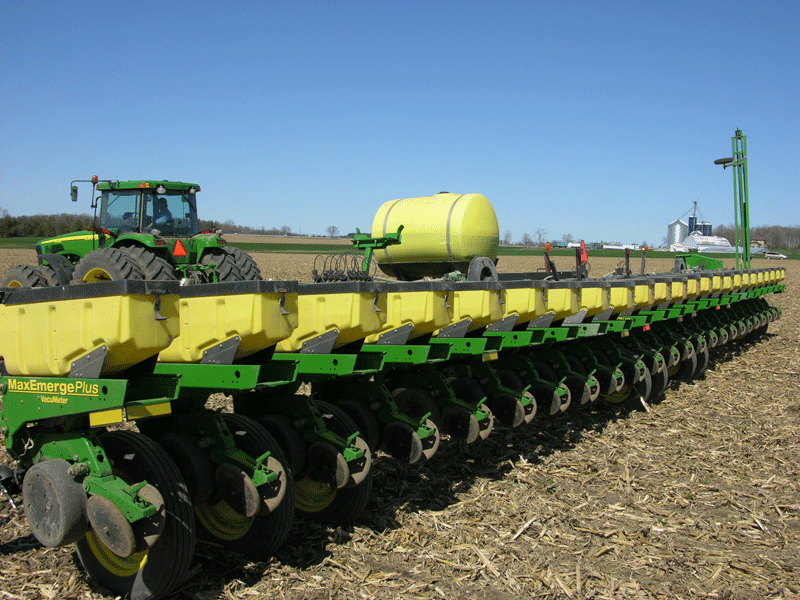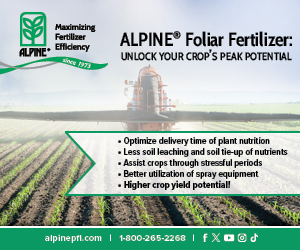Spring advice
TIPS FROM CERTIFIED CROP ADVISORS
WE ASKED THREE Certified Crop Advisors (CCAs) to share their best tips you can use on your farm this spring.

SPRING APPLICATION OF NON-AGRICULTURAL SOURCE MATERIALS (NASM) GIVES YOU THE MOST BANG FOR YOUR BUCK
While most NASM’s, such as sewage biosolids, are applied at no charge to the agricultural community, the crop receives the maximum nutrient benefit if the material is applied in the spring. This is due to the high nitrogen content which will be readily available to the growing crop. To conserve the nitrogen for plant uptake, make sure the contractor injects or immediately incorporates the material to prevent nitrogen loss, thereby receiving the “best bang for your buck”. NASM’s can provide the agricultural community significant amounts of plant available nitrogen, phosphorous, micronutrients such as copper, zinc, and sulphur, as well as large amounts of organic matter. Their usage is regulated through a NASM Plan.
– Mark Janiec, CCA, Land Application Manager, Terratec Environmental Ltd., Rockwood, ON
GET BETTER RESULTS WITH A STRONG START — FOCUS ON PLANTING DETAILS
Take a look at your coulters. Their purpose is to open the seed slot and slice trash, not ride along on the tool bar. Phil Needham of Needham Technologies challenges growers to make sure they have the proper circumference of coulter to maximize slicing power. I have a lot of conversations about trash management around kitchen tables. Removing the mat of residue from the soil surface can increase soil temperatures six to eight degrees Fahrenheit. So no clumps please. Whatever method you use to close the seed slot make sure it is working.
For excellent information on planting depth and corn growth, refer to an article written by Murray Van Zeggelaar, CCA, at ccaontario.com. Click on agronomic articles and scroll down to crop management.
Please be aware that soybeans are very sensitive to cold soils and take on ten times their weight in moisture to germinate, so late morning and on is primetime for planting.
Make sure your unit is level front to back. Drive at the speed it was designed to. Call your seed supplier to make sure planting populations and seed singulation are correct, otherwise crowded plants emerge late or throw cobs.
The basics never change. You need a fine, firm seedbed with good seed soil contact. A seed can’t germinate properly in air pockets or compacted soils. Put it in the right depth, properly spaced, and let light, heat, and moisture take over.
- Al Kerslake, CCA, Crop Specialist for FS Partners, Elmvale, ON
TOP 10 SPRAY TIPS
- Always read the label for every spray you are using. Companies spend a lot of time and investment in developing their products and most importantly, how to get the most effective control with them. They want you to be a satisfied customer. Follow their Best Management Practices for proper spray application to achieve optimal control. It may even help you later if you have an efficacy issue. You will be able to say that you followed the label.
- Always use the full label rate and multiple modes of action to avoid contributing to herbicide resistance. It is important that we use best management practices and contribute to the sustainability of these agricultural technologies.
- Use air induction anti-drift nozzles to achieve satisfactory droplet size for good spray coverage and less drift potential. Ideally you want to select nozzles that can achieve a coarse spray over a broad range of spray pressures. Other drift control measures include spray additives, spray hoods, and spray shields.
- Small droplet size may be OK for systemic pesticides applied in 15 gallons of water per acre but larger spray droplet size is needed to improve coverage and control for contact pesticides. A good starting point is 250 micron droplets for most classes of sprays. Some of the newer pesticide labels will provide their recommended micron droplet size along with the most desirable spray application rate of 15 gallons per acre.
- Spray when wind speeds are less than 10mph to keep spray on target. Spraying in a 10mph wind at 80F can be as significant as the spray drift in a 15mph wind at 50F temperatures. Keeping boom height at 20-24 inches above the crop canopy will generate half the drift of a boom height kept at 36-40 inches above canopy. Auto boom height controllers can help keep drift to a minimum while providing the 100% overlap coverage that will give best spray control.
- To reduce drift avoid spraying on calm early mornings. Minimal drift can be achieved while spraying on bright sunny days and when the wind starts to stir after sunrise.
- It is easier to kill small actively growing weeds. In fact, soybean yields are maximized by keeping the crop weed free between the first and third trifoliate while corn yields can be maximized by keeping the crop weed free from the three to eight leaf stage.
- Grassy weeds are more challenging to control than broadleaf weeds because they have small vertical upright leaves that are difficult for spray to cling to. Adequate control of grassy weeds requires higher water volumes than broadleaves and finer spray droplets for better coverage.
- Avoid high application speeds and rapid speed changes as these can increase the potential for uneven spray coverage.
- Spray responsibly and professionally. That means respecting your neighbour and spraying with appropriate due diligence in the appropriate spray weather conditions. Leaving a buffer between you and any of your neighbour’s sensitive crops is always a good will policy. It is not only common sense but makes for good neighbourly relations. Buffer zones can be sprayed when the wind direction changes.
- Morris Sagriff, CCA, DuPont Pioneer, Tupperville, ON •
Crop advisors provide advice and council producers in their decision making process. This responsibility requires a good understanding of science, food safety, technology, economics and environment. Crop advisors combine knowledge in these disciplines with their local experience to render sound recommendations.
If you would like to contact a CCA in your area or if you would like contact information for any of the above mentioned CCAs, please contact the CCA office at (519) 669-3350 or visit the website at www.ccaontario.com. •

















